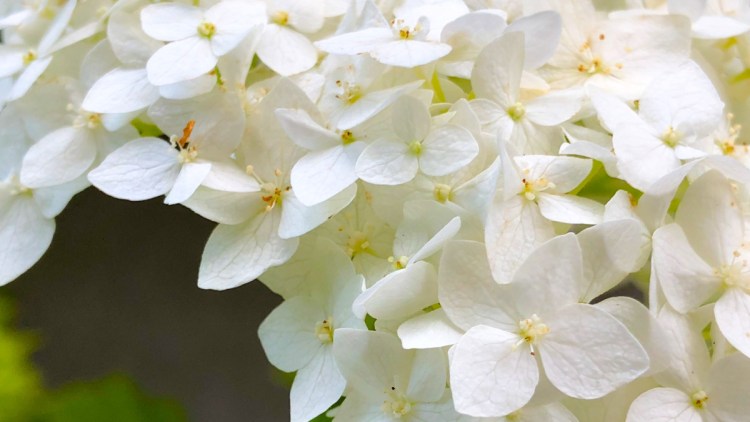Although about native plants, a recently published book by two New England Wild Flower Society horticulturists is itself a hybrid: a cross between a wildflower-identification book and a tutorial on growing excellent – and native – gardens in New England.
With more gardeners turning to natives, “Native Plants for New England Gardens” by Mark Richardson and Dan Jaffe fills a definite need.
The authors consider as natives any plants that were present in five different New England ecoregions when Europeans first arrived in America. In addition to all of modern-day New England, those regions extend as far west as Ohio, south as Pennsylvania and well into Ontario, Quebec and the Maritime provinces in Canada.
In a talk earlier this summer at the Maine Audubon Society, Jaffe said that too many definitions of native assume that plants respect political boundaries – that such a thing as a Maine native exists, for example. Their ecoregions ignore man-made state and national boundaries and instead take in such factors as temperature, rainfall, soil types and canopy, which together determine which plants will grow where.
Richardson and Jaffe admit that the definition has excited some controversy – as shown, for example, by the Jerusalem artichoke, Helianthus tuberosus, which grew wild in America but not on the East Coast, controversy “in the sense that its introduction to New England was not by natural migration but assisted migration by native Americans,” they write in the book. Because it had already reached New England when Europeans arrived, though, most experts consider it native.
In “Native Plants for New England Gardens,” the two horticulturalists are more open to cultivars of native species than many other wildflower advocates are. An example is their book’s suggestion to plant the purple-leaved cultivars of the native ninebark, “Diablo” and “Coppertina,” as alternatives to the terribly invasive Japanese barberry. “Those seeking an attractive shrub with purple leaves that can be used in a formal garden can opt for ninebark instead of barberry.”

That said, they recognize that the species do more to benefit native wildlife than do cultivars. Consider the smooth hydrangeas (Hydrangea arborescens), available at commercial nurseries almost entirely as the cultivar “Annabelle” and its derivatives. Those are all double flowers, which are sterile, thus provide no benefit to pollinators. The species or natural smooth hydrangeas has lacecap flowers, with large outer petals to attract pollinators and smaller, fertile petals to feed them – while also creating seed. (“Annabelle’s” leaves do serve as a host for native caterpillars, so the bush does make some contribution to the environment.)
“We like to plant both “Annabelle” and the natural species so that we provide the show of “Annabelle” and the ecological value of the natural flowers,” they wrote in their book.
Design tips are scattered throughout the book’s descriptions of specific plants. For example, Richardson and Jaffe have advice for creating parking-lot gardens.
“Because of its tolerance for dry soils and salt, bayberry (Morella caroliniensis) is a perfect parking lot plant. Combine it with butterfly milkweed (Asclepias tuberosa) and narrow-leaved mountain mint (Pycnanthemum tenuifolium) you can turn areas typically barren of life into small biological hot spots.”
The book is simply and effectively organized. The five-page introduction covers why native plants are needed, provides the authors’ definition of natives, and gives advice on garden maintenance and choosing the right plant for specific locations. Richardson and Jaffe say the only time they water plants at the New England Wild Flower Society gardens is when the plants are getting started. They never use fertilizers – but do build healthy soils organically – and they never use pesticides of any kind. They want to avoid killing beneficial insects; also, because native plants are undeniably well-suited to the lands they’re native to, they need less tending than hybrids and nonnatives.
Appendixes offer lists of the best plants for pollinators, sunny gardens, shady gardens, dry sites, moist or wet sites, song birds, groundcover, edibles and herbs, fall foliage and winter interest. The book includes a map that shows the extent of New England’s five ecosystems. And it gives information on and descriptions of native plants the authors recommend for use in New England gardens, accompanied by photographs – taken by Jaffe – of each plant. A well-organized index takes the reader to each plant.
During his talk, Jaffe credited Richardson for the book’s concision. When he writes, Jaffe said that he tends to include everything he knows, while Richardson cuts it down to the essentials. That teamwork makes for easy reading.
This is a book that will remain on my shelves for the rest of my life and, I am sure, be pulled out regularly for perusal.
ABOUT THE WRITER
TOM ATWELL is a freelance writer gardening in Cape Elizabeth. He can be contacted at: tomatwell@me.com.
Send questions/comments to the editors.



Comments are no longer available on this story